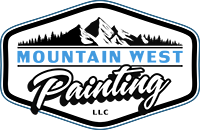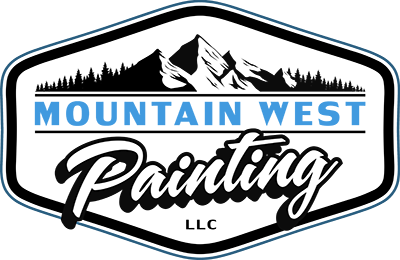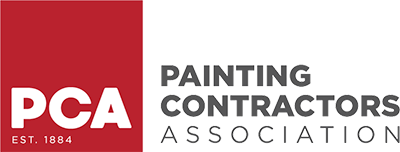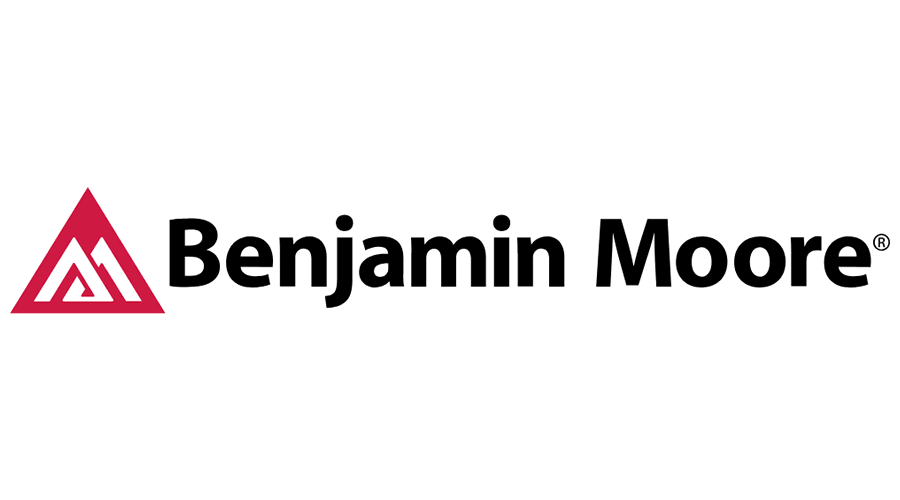Maintaining a historic commercial building is a delicate balance. The paint you choose plays a key role in protecting its structure and preserving its character — while meeting the tough demands of a busy commercial space.
Whether you’re renovating a 1910 storefront, a 1930s hotel, or a 1950s schoolhouse, choosing the right products and application methods matters. Your choices affect not just appearance, but durability, moisture control, code compliance, and future maintenance.
This guide covers how to select historically appropriate, durable paint systems for your commercial property, from brick and wood trim to metal fixtures and plaster interiors. We’ll walk you through choosing products, preparing surfaces, matching colors, and applying finishes that respect your building’s past and perform for years to come.
Challenges of Painting Historic Commercial Buildings

Common Surface Conditions
Every material reacts differently to age and climate. Here are a few conditions you may encounter and how a specialized contractor typically addresses them:
| Material | Issue | Approach |
|---|---|---|
| Brick | Efflorescence and Spalling | Moisture test first; treat with silicate or mineral paint to allow breathability |
| Wood | Lead paint, peeling, tannin bleed | Lead-safe removal; sand, fill, apply blocking primer |
| Plaster | Hairline cracks, weak or chalky surface | Stabilize with Zinsser Gardz; fill with plaster-compatible compounds |
| Metal | Rust, oxidation | Chemically treat or sandblast; apply rust-inhibitive primer first |
Preservation Regulations
Some historic districts prohibit sandblasting, power washing, or adding non-breathable coatings. Preservation boards may approve only certain products — typically mineral, clay, or limewash — to match original finishes.
Tip: Always submit color and product samples to the preservation commission first. Keep a physical portfolio to show to regulators and stakeholders.
Owner Concerns
Your main worries often come down to:
-
Will this destroy original material?
-
Will it last under heavy use — without constant repairs?
-
Will regulators approve the color and finish?
A careful specification, a small test patch, and proper surface preparation can ease these worries.
Surface-Specific Paint Selection Strategies
Brick and Masonry
Using a mineral or silicate paint lets brick “breathe”— preventing future damage from trapped moisture.
For hardier, less porous brick, a specialized acrylic designed for masonry (such as Benjamin Moore Ultra Spec® Masonry) can be appropriate.
Tip: Always perform a small absorption and pH test first. If pH is above 9 or there’s residual moisture, a mineral silicate will outperform acrylic.
Wood Trim
Lead-safe removal is a key first step. Once the surface is properly cleaned and sanded, apply:
-
Zinsser B-I-N Shellac Primer: To block tannins and lead.
-
Sherwin-Williams Duration: Durable, flexible, resists peeling and cracking.
Tip: Fill all small gaps and joints with a flexible acrylic caulk to keep water from entering.
Plaster
Your main consideration with historic plaster is permeability.
Using a hard, non-breathable resin will trap moisture and damage the wall. Instead:
-
Bind weak areas with Zinsser Gardz.
-
Fill small voids with a compatible patch.
-
Topcoat with a permeable, matte finish — Farrow & Ball Estate Emulsion or Fine Paints of Europe ECO Line — to match historic texture.
Metal
Remove rust first. Chemically treat or sandblast to expose a clean surface. Then apply a rust-inhibitive primer (like Rust-Oleum) immediately. For color and finish, a direct-to-metal (DTM) paint like PPG Pitt-Tech® DTM will provide a durable, protective barrier.
Choosing Historically Accurate Colors
Color Palettes by Era
| Architectural Era | Color Characteristics |
|---|---|
| Victorian (1840-1910) | Rich, deep shades — hunter green, brick red, ochre |
| Colonial Revival (1880-1955) | Light, neutral bases with dark trim — whites, creams, black, deep green |
| Art Deco (1910-1940) | Soft pastels, gold, deep blue — often accented by black or metal |
| Mid-Century Modern (1950-1970) | Bright, clear colors — aqua, orange, yellow — reflecting a more optimistic era |
Preservation Boards’ Expectations
-
Stick to documented color schemes
-
Provide physical color samples
-
Highlight architectural details with appropriate color placement — a Victorian storefront might use a deep color for framing, a neutral base for the main wall, and a rich, contrasting color for the trim.
Tip: Large color boards (at least 24” x 24”) help regulators visualize your proposal on site.
Primer and Surface Preparation Essentials

Lead-Safe Practices
Remove lead safely. Lead-safe crews will:
-
Tape and mask the area
-
Use wet sanding, non-thermal removal, or chemical strippers
-
Gather and dispose of lead debris in sealed containers
-
Monitor lead levels in air and soil afterwards
Filling and Repair
For brick, use lime-rich mortars; for wood, flexible acrylic compounds; for plaster, a matching gypsum-based filler.
Tip: Push filler into voids to match texture; sand once hard.
Primers
Primer must match both the material and future finish.
For porous brick, a silicate primer; for resinous wood, a blocking primer; for weak plaster, a binding sealer.
Performance Coatings with a Historic Look
Durable Finish Choices
Your final color should reflect the original, while the resin technology under it performs to modern standards.
| Sherwin-Williams Duration Rain Refresh: | Low-sheen, flexible, dirt-shedding |
| Benjamin Moore Scuff-X: | Durable matte, scrubable, ideal for high-traffic interiors |
| PPG Break-Through!: | Fast-drying, tough, sticks directly to metal or previously finished wood |
Where To Upgrade
Consider choosing higher-durability products in areas prone to damage — baseboards, railings, doors — while using more permeable finishes elsewhere.
Tip: Combine finishes to match service conditions — a permeable clay or limewash for main wall planes, a tough acrylic or urethane for trim.
Working with a Pro — What to Ask and Expect

Preservation-Savvy Painters
Your contractor should:
-
Provide a condition report
-
Perform lead and pH testing
-
Provide color match samples
-
Develop a custom specification and maintenance plan
Question Checklist — Additional Detail:
✔ Are you lead-safe certified?
✔ Are you experienced with historic structures?
✔ Will you submit color and material samples to the preservation board?
✔ Are you comfortable using specialized products (like silicate or clay paint)?
✔ Do you follow industry standards (PDCA, SSPC)?
Conclusion
Your historic commercial building is more than just a piece of real estate — it’s a legacy. Choosing the right paint color, products, and application methods is an opportunity to celebrate its past while securing its future.
Using specialized products like Keim Royalan, Sherwin-Williams Duration, or Benjamin Moore Aura, you can match original color schemes, allow brick and plaster to breathe, block lead and rust, and handle heavy wear — all while honoring the character of your property.
If you’re ready to move forward, we’d be pleased to help you match colors, select products, prepare a specification, or connect you with a team of skilled, preservation-savvy applicators.




